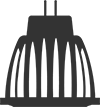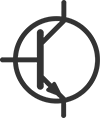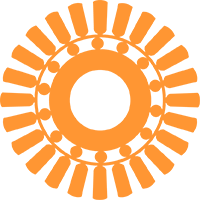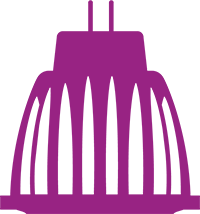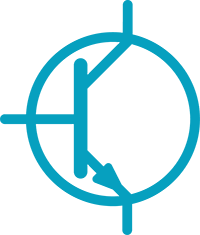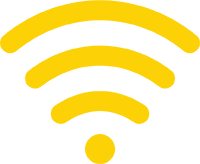“Smart” lamps combine technology breakthroughs in wireless communications and light emitting diodes (LEDs). Often controlled by a smartphone app, these lamps can dim, change colour and shift to new scenes all by simply touching your phone. However, the lamps consume energy even when they are not in use. The standby functions drastically increase the lamp’s total energy use and the standby energy can easily be larger than the energy used for providing lighting. In order to better understand smart lighting features and their associated energy use, the IEA 4E SSL Annex has launched a new study on the energy performance of smart wireless lighting.
Tests on a limited number of smart wireless LED lamps have revealed that these products can have substantial standby power consumption. In sockets operated 1-2 hours per day – common in many residential applications – some lamps will consume half or more of the lamps’ total annual energy use while the lamps are ‘off’ for 22–23 hours every day. The total energy use is thus much higher than for a simple LED lamp of equivalent light output operated by the normal on/off switch. These test results are similar to experiences with standby consumption for other products where manufacturers first focused on the new features before turning their attention to reducing the standby power consumption.
The risk that smart features may offset some of the energy-efficiency gains from switching to LED technology is the reason why the SSL Annex intends to study smart wireless lighting currently offered in the market and assess the energy use and performance characteristics of these systems.
“We are very pleased to have this new study underway with our technical experts in the SSL Annex.” said Dr. Peter Bennich, chairman of the SSL Annex’s Management Committee and representative of the Swedish Energy Agency, one of the Annex’s member countries. “As policy makers, we were aware of these new smart wireless lamps, and we are concerned that the standby power consumption for some of them is so high.”
Smart wireless-controlled LED lamps offer new services and features that add value to consumers and enhance the lighting experience in our homes and offices. These smart lamps are often controlled by a smartphone app or a dedicated remote control, and offer the ability to dim, change the colour or make use of programmed scenes with gradual changes in the lighting. For some of the lamps, manufacturers also provide a hub (with its own energy consumption) for wireless communication between the lamps and other devices using protocols such as Zigbee, 6LoWPAN or Bluetooth.
When the lamp is not emitting light, it switches to a standby mode waiting for a signal from the end-user to switch-on again or they may actually be serving as part of a local wireless network, in a more active energy consuming mode. This means that the lamps are consuming energy even when they are not emitting light.
The objectives of this new IEA 4E SSL Annex study are to provide an overview of products and smart features, to conduct measurements on real products, to determine an appropriate way to measure and compare the lamps, to consider energy saving potentials and to evaluate possible appropriate measures to facilitate lower standby mode power consumption.
“Examination of the lamps as well as the communication protocols and gateways will provide an evidence base on which we can make some recommendations. This new study will help to ensure that these new smart lamps don’t reverse some of the positive developments we’ve observed in energy consumption for lighting,” said Dr Bennich.
The SSL Annex has compiled some test data on smart lamp products purchased in 2014 and tested in Annex Member Country lighting laboratories:
- 11 models purchased in the USA by Erik Page & Associates and tested at ITL Boulder,
- 3 models purchased in Europe and tested by the Swedish Energy Agency, and
- 2 models purchased and tested by the Australian government.
The sample sizes for these models tested are small (typically between 1-3 units), therefore the test results should only be interpreted as indicative measurements at this stage. However, first measurement results have shown that some smart lamps have high standby power consumption, with one model as high as 2.7 W. If the lamps tested were used 1 hour per day, the standby power consumption of all tested lamps (i.e., when the lamps are not producing light) would be on average about 60% of their total annual energy use. The average “corrected” efficacy therefore, taking into account this standby energy consumption, is approximately half of the rated efficacy.
In the future, there might be dozens of wirelessly controlled lamps in a single home, which taken together could result in high standby power losses. Therefore, the IEA 4E SSL Annex hopes that this study will help raise attention to the standby usage, so that design improvements can be made to the circuits that will lower smart lighting standby power. Indeed, we have found some lamps already operate with only 0.17–0.25W standby power while others have up to ten times higher power use, so design improvements are certainly possible.
The SSL Annex recognises that the market potential of smart lighting is extensive, once the platform enabling functionality has been established. These smart lighting products can also be used in other applications such as museums, exhibition halls, shopping centres and supermarkets where the lamps might be used as WiFi nodes to help consumers with smart phones to navigate a building or find products in a store. For example, the interaction between the smart lights and smart phones could activate visual and aural information for self-guided museum tours or detailed product information in a store. The opportunities and applications are virtually limitless; and it is for this reason the SSL Annex feels it is so important to study standby power consumption.
The IEA 4E SSL Annex intends to propose an interim energy measurement methodology, which will be investigated as part of this work. This new SSL Annex study will also focus on other new developments, such as lamps that increase power use over time to maintain constant lumen output, or vary their lumen output in order to reduce the impacts of overheating. While addressing technical challenges with LED lighting, these approaches also make it more challenging to test the performance of these lamps, and for consumers to understand the service and associated energy consumption being provided.
About the IEA 4E SSL Annex:
The SSL Annex works internationally to support efforts at a national and regional level by addressing the main challenges with SSL technologies. The Annex member countries believe that there are significant advantages in engaging in an international collaboration in order to develop a consensus on harmonised approaches to SSL performance and quality. Sponsoring governments of the SSL Annex include Australia, Denmark, France, Korea, the Netherlands, Sweden, the United Kingdom and the United States. China also participates as an expert member of the SSL Annex. The work of the SSL Annex spans a wide range of initiatives which can be found on the Annex’s website (https://www.iea-4e.org/ssl/), including guidance for policy makers, quality and performance tiers and support for laboratory accreditation. The SSL Annex is also collaborating with the 4E Electronic Devices and Networks Annex (EDNA) in the area of smart lamps. The EDNA Annex is focussed on all network connected devices – for more information please see: https://www.iea-4e.org/edna/about/.
Press Contacts:
| SSL Annex Questions | SSL Annex Chair |
| Nils Borg Operating Agent Borg & Co. Stockholm, Sweden T: +46 70 585 31 74 | Dr. Peter Bennich Chairman, SSL Annex Management Committee Swedish Energy Agency Stockholm, Sweden T: +46 16 544 22 78 |

























